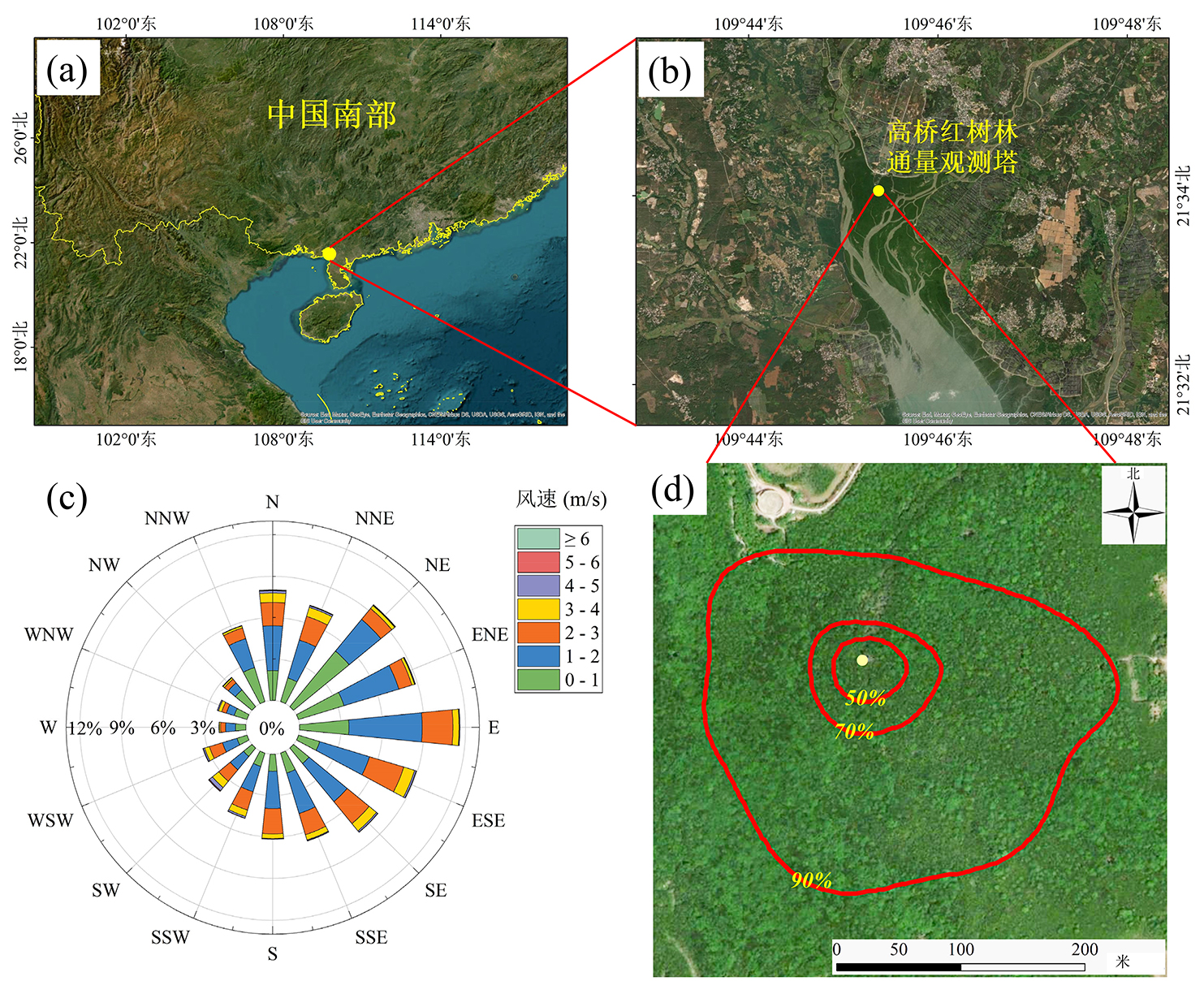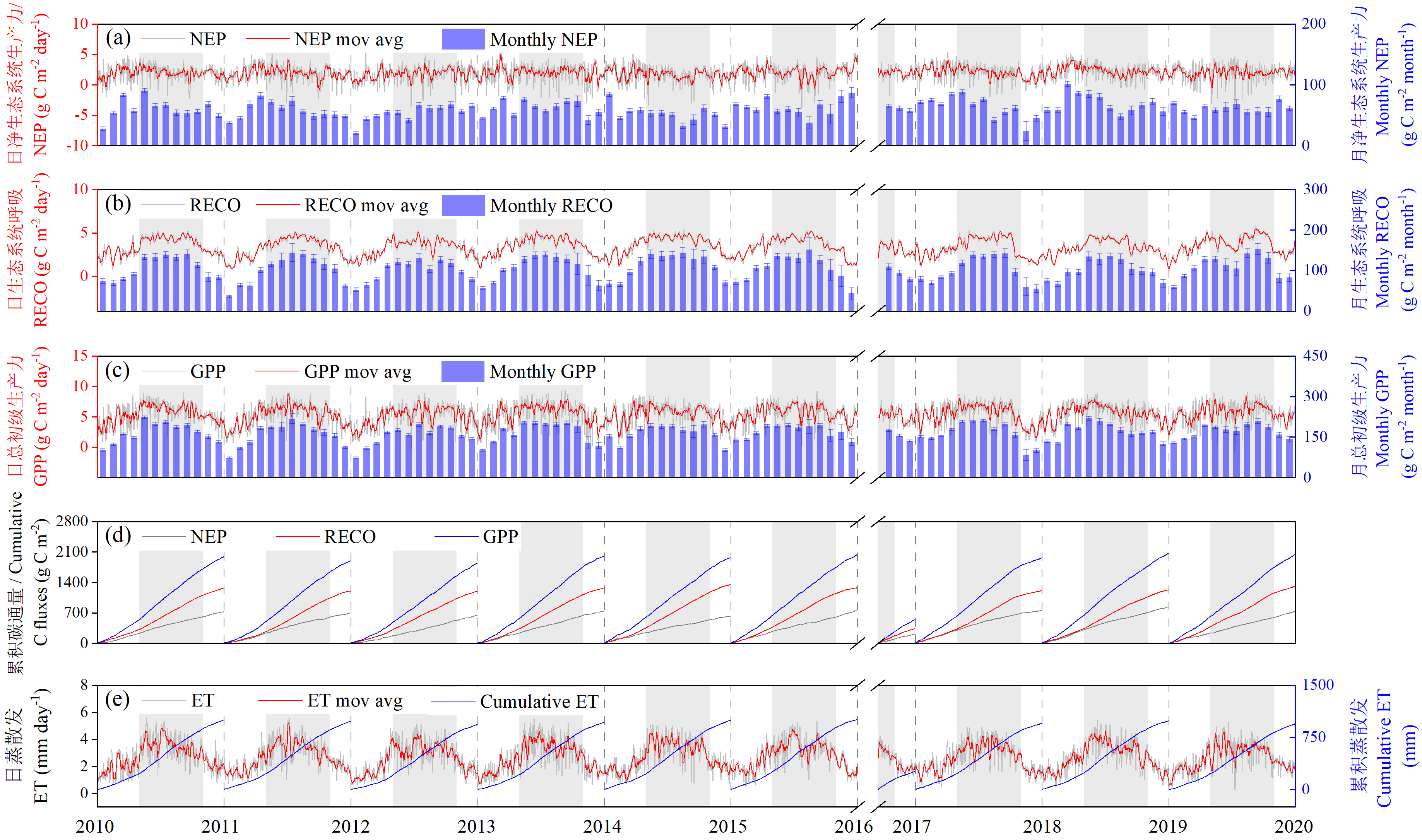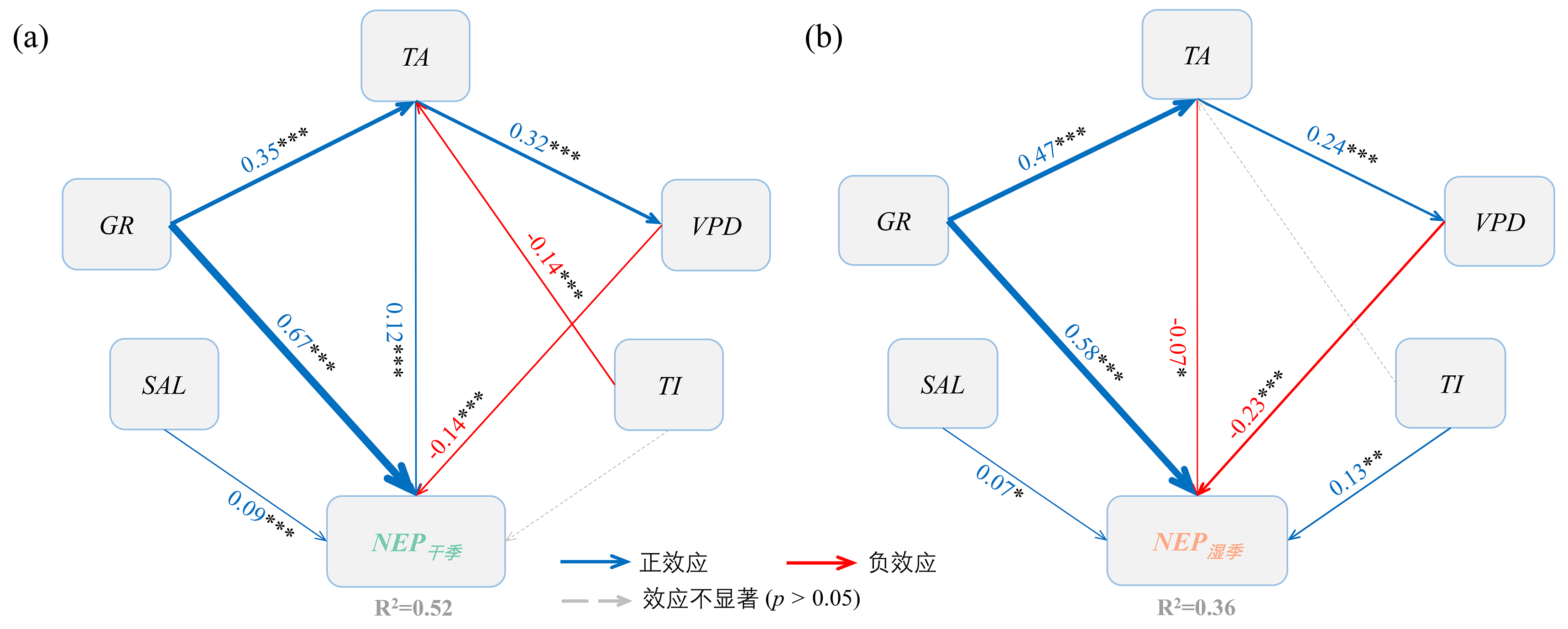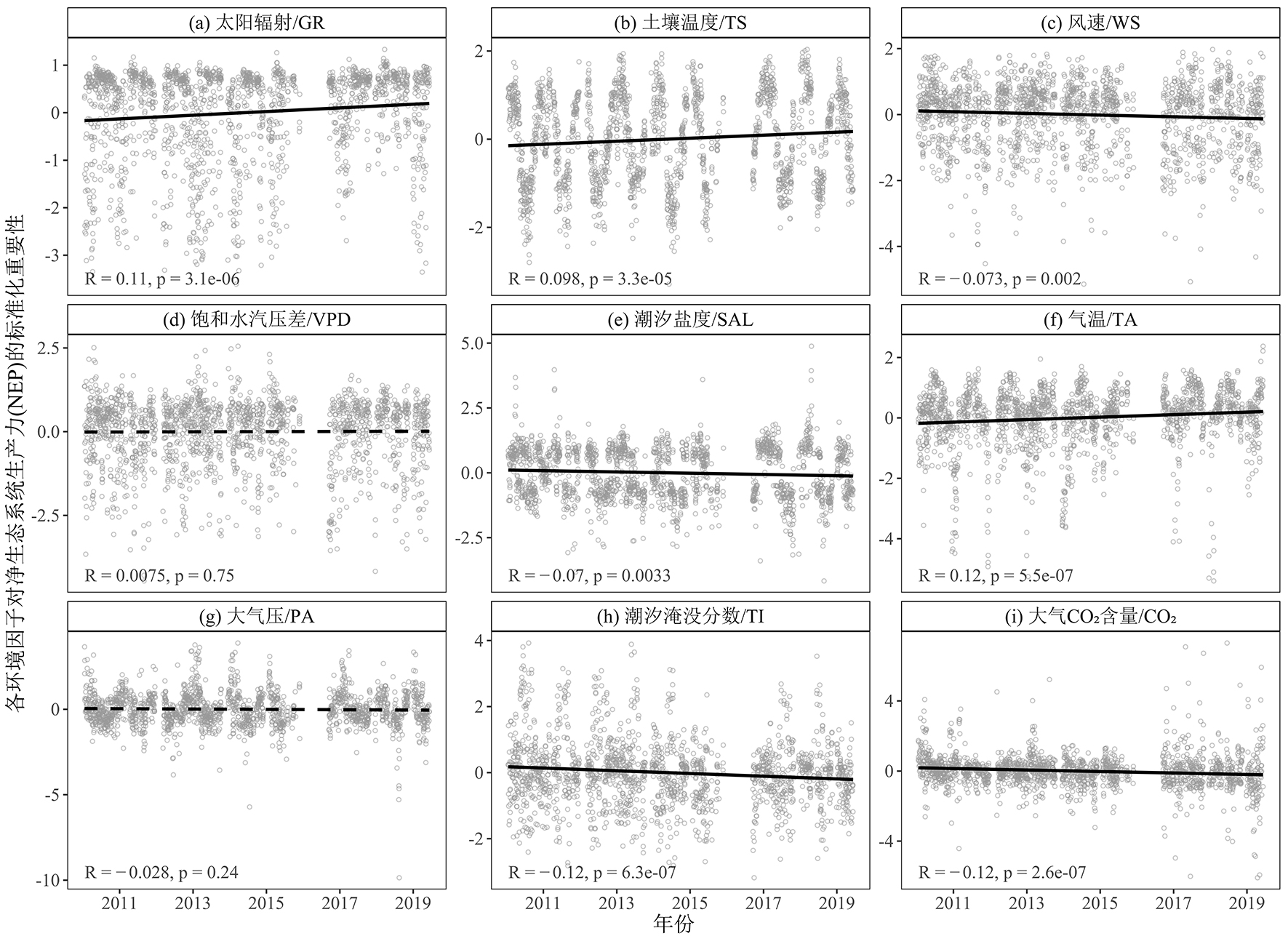Mangroves, as one type of coastal “blue carbon” ecosystems, are highly efficient as carbon sinks, playing an important role in sequestering carbon dioxide and mitigating global climate change. Due to the lack of long-term monitoring data, in the analysis of the environmental drivers of mangrove ecosystem fluxes, short-term observation results are usually used as data reference, causing great uncertainty in research conclusions. Therefore, the seasonal variation, driving mechanism and long-term trend of environmental driving factors of mangrove ecosystem carbon and water fluxes have not been comprehensively analyzed, calling for further assessment and verification.
To address the above problems, Professor Lin Guanghui’s Research Group of DESS, Tsinghua University has carried out long-term continuous monitoring of carbon dioxide and water fluxes in the core area of Zhanjiang Mangrove National Nature Reserve (Gaoqiao area) since 2009 (Fig. 1). Based on the 10-year long-time series of subtropical mangrove carbon and water flux dataset, the seasonal variation pattern, driving mechanism and long-term trend of environmental drivers of subtropical mangrove carbon and water fluxes were discussed, offering a new reference for constructing a mangrove carbon and water flux model and verifying its interannual variation.

Fig. 1. Study area. (a) The location of the Zhanjiang National Mangrove Nature Reserve, (b) Gaoqiao mangrove flux site landscape, (c) wind rose over ten years, and (d) Gaoqiao eddy covariance (EC) tower footprint contour lines.
It has been found in the study that the Gaoqiao subtropical mangrove forest acted as a strong and stable CO2 sink, with annual net ecosystem production (NEP) ranging from 622.5 to 832.8 g C m-2 year-1. The annual evapotranspiration (ET) varied between 934.6 and 1004.9 mm year-1. In terms of seasonal variation, mangrove ET consistently remained higher in the wet season compared to the dry season, while NEP did not exhibit consistent seasonal variation. This was mainly caused by different dominant environmental factors in different seasons and the difference in the variation of influencing intensity of such factors. (Fig. 3) Specifically, during the dry season, NEP was primarily influenced by global solar radiation and vapor pressure deficit. However, in the wet season, NEP was regulated by a combination of global solar radiation, vapor pressure deficit, air temperature, and tidal inundation time. Additionally, long-term monitoring study revealed that the relative importance of global solar radiation in driving mangrove NEP and ET increased over the past decade, while the influence of tidal inundation time diminished during the period.

Fig. 2. Temporal variations in carbon and water fluxes over ten years. (The gray shading denotes the wet season and the area in between denotes the dry season)

Fig. 3. Path analysis effect of environmental variables on net ecosystem production (NEP) during the dry season and the wet season

Fig. 4. Trends in the standardized importance of all drivers for net ecosystem production (NEP) over 10 years
The related study has been published in Agricultural and Forest Meteorology in the form of a paper titled “Temporal variations of carbon and water fluxes in a subtropical mangrove forest: Insights from a decade-long eddy covariance measurement”.
Gou Ruikun, a doctoral student from the DESS, Tsinghua University, is the first author of the paper, and Professor Lin Guanghui from the DESS is the corresponding author of the paper. Co-authors of the paper include Professor Nina Buchmann and her team from ETH Zurich, Switzerland, Assistant Professor Chi Jinshu from the Hong Kong University of Science and Technology (Guangzhou), Dr. Luo Yunpeng from Swiss Federal Institute for Forest, Snow and Landscape Research WSL, Dr. Mo Lidong from ETH Zurich, Switzerland, Associate Professor Lu Weizhi from Central South University of Forestry and Technology, and Dr. Cui Xiaowei from Party School of Shandong Provincial Committee of the Communist Party of China, senior engineers Chen Yuechao and Lin Guangxuan of the Zhanjiang Mangrove National Nature Reserve Administration, Guangdong Province, Dr. Liang Jie from Australian National University, Dr. Peng Haijun from , Swedish University of Agricultural Sciences, Guo Jiemin from American Environmental Sciences Associate, and Dr. Meng Yuchen and Dr. Song Shanshan, doctoral graduates of the DESS, Tsinghua University. This study was financially supported in part by the grants from National Key Research and Development Program of China (2019YFA0606604) and Shenzhen City’s University Stable Support Program (WDZC2020819173345002).
Title of the paper:
Gou, R., Buchmann, N., Chi, J., Luo, Y., Mo, L., Shekhar, A., Feigenwinter, I., Hörtnagl, L., Lu, W., Cui, X., Meng, Y., Song, S., Lin, G., Chen, Y., Liang, J., Guo, J., Peng, H., Lin, G., 2023. Temporal variations of carbon and water fluxes in a subtropical mangrove forest: Insights from a decade-long eddy covariance measurement. Agricultural and Forest Meteorology 343, 109764.
Full-text link:
https://www.sciencedirect.com/science/article/abs/pii/S0168192323004549
Written by Gou Ruikun and Lin Guanghui
Edited by Wang Jiayin
Reviewed by Zhang Qiang